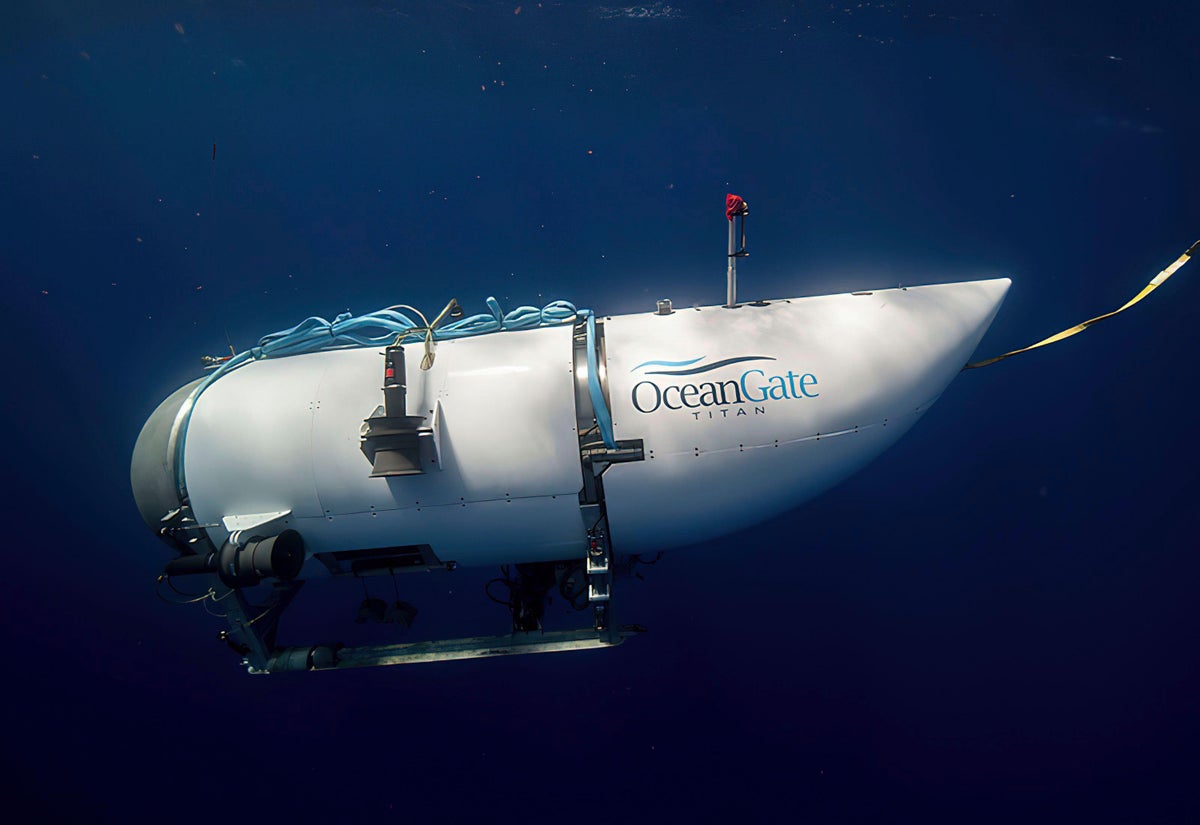
Chris Brown, a digital marketing businessman, says he was nearly a passenger on the submarine expedition to the Titanic that has gone missing, but pulled out due to safety concerns.
Mr Brown, who is friends with British billionaire Hamish Harding, one of the five passengers on the missing submersible, told Good Morning America he was initially drawn to embarking on the expedition due to the historic and scientific possibilities.
"Being a modern-day adventurer interested in pushing the boundaries of our knowledge of places that people go... the Titanic is obviously an iconic wreck," he said. "It’s a chance for an expedition, an exploration and adding a bit of science into the situation."
The businessman didn’t elaborate on what prompted his concerns, telling host Michael Strahan, “The focus right now has to be on trying to rescue these people."
As The Independent has reported, details have emerged suggesting OceanGate, the company which built the sub, had a questionable safety record.
In 2018, the company fired a top official who alleged in a wrongful termination suit, obtained by The New Republic, that he was fired for blowing the whistle about concerning safety issues.
According to the suit, David Lochridge delivered highly critical updates regarding the ship’s quality control to senior management and OceanGate CEO Stockton Rush, pointing to alleged issues such as “visible flaws” in the ship’s carbon fibre hull, “prevalent flaws” in a scale model, flammable materials onboard, a viewing window not rated for the Titanic’s depth, and key safety documents that were not shared with him.
The company, which made a point of touting its unique carbon fibre design and attitude towards marine industry regulators, alarmed fellow leaders in the submarine world.
In 2018, the Marine Technology Society warned the company there were “catastrophic” issues in how it had developed the craft that’s now missing.
Three dozen signatories including executives, oceanographers, and explorers expressed “unanimous concern”, particularly with the company’s decision not to seek outside evaluation and testing.
“While this may demand additional time and expense,” the signatories wrote in the letter, which was obtained by The New York Times. “It is our unanimous view that this validation process by a third party is a critical component in the safeguards that protect all submersible occupants.”
In 2020, the CEO of OceanFate admitted to GeekWire the hull of the submarine was showing signs of “fatigue”, one of the same technical issues the former employee from the lawsuit had warned about, as the company continued to test the craft, including with a 4,000m deep dive in the Bahamas.
As a result, the company temporarily downgraded the Titanic submarine’s hull depth rating to 3,000m, 1,000 less than the Titanic’s depth, according to TechCrunch.
A 2022 mission saw the prototype suffer battery issues that required the ship to be manually attached to a key lifting platform, according to court documents obtained by The New York Times.
Last year, on a visit to the Titanic programme, a CBS News reporter watched as the submarine suffered a communications issue with the ship overseeing its voyage and was lost for nearly three hours underwater.







